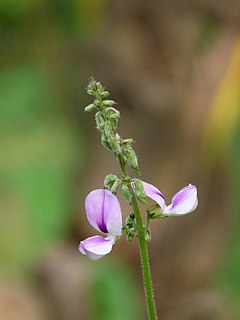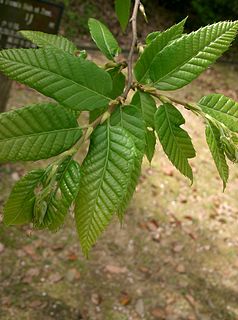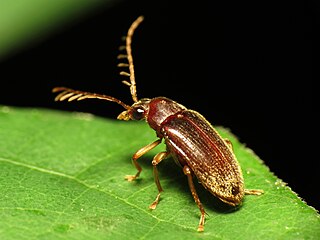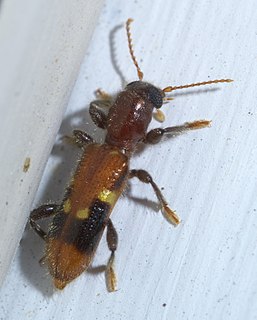
The chestnuts are a group of eight or nine species of deciduous trees and shrubs in the genus Castanea, in the beech family Fagaceae. They are native to temperate regions of the Northern Hemisphere.

The American chestnut is a large, monoecious deciduous tree of the beech family native to eastern North America. Before the species was devastated by the chestnut blight, a fungal disease, it was one of the most important forest trees throughout its range, and was considered the finest chestnut tree in the world. It is estimated that between 3 and 4 billion American chestnut trees were destroyed in the first half of the 20th century by blight after its initial discovery in 1904. Very few mature specimens of the tree exist within its historical range, although many small shoots of the former live trees remain. There are hundreds of large American chestnuts outside its historical range, some in areas where less virulent strains of the pathogen are more common, such as the 600 to 800 large trees in northern Lower Michigan. The species is listed as endangered in Canada as well as in the United States.

The bay-breasted warbler is a New World warbler. It breeds in northern North America, specifically in Canada, into the Great Lakes region, and into northern New England.

Pueraria is a genus of 15–20 species of plants native to Asia.

Castanea crenata, known as Korean chestnut, Korean castanea, and Japanese chestnut, is a species of chestnut originally native to Japan and South Korea. It is a small to medium-sized deciduous tree growing to 10–15 m tall. The leaves are similar to those of the sweet chestnut, though usually a little smaller, 8–19 cm long and 3–5 cm broad. The flowers of both sexes are borne in 7–20 cm long, upright catkins, the male flowers in the upper part and female flowers in the lower part. They appear in summer, and by autumn, the female flowers develop into spiny cupules containing 3–7 brownish nuts that are shed during October.
Pensacola is a genus of jumping spiders that was first described by George and Elizabeth Peckham in 1885.

The chestnut short-tailed bat is a bat species from South and Central America. The species is often confused with the Benkeith's short-tailed bat. It is a mainly frugivorous species that has been known to consume insects. To determine which pipers to forage on, it focuses on oder and then after proceeds to echolocate to determine position. It hunts between nightfall and midnight. Habitats include hollow trees, caves, cracks, abandoned mines, sewers, and house roofs. It does not decrease activity during full moons, only instances of turbulent weather like heavy rain. In an agricultural setting it has a higher resistance to habitat fragmentation compared to similar bat species.
The white-faced nunbird is a species of puffbird in the family Bucconidae. Its genus Hapaloptila is monotypic. It is found in Colombia, Ecuador, and Peru. Its natural habitat is subtropical or tropical moist montane forests.

Maladera is a genus in the beetle family Scarabaeidae, containing species such as Maladera insanabilis and Maladera castanea. There are at least 480 described species in Maladera.

Plectreurys castanea is a species of spider. They are found in the United States.
Simaethulina is a monotypic genus of Congolese jumping spiders containing the single species, Simaethulina castanea. It was first described by Wanda Wesołowska in 2012, and is found only in the Congo.
Epilampra is a genus of cockroach in the family Blaberidae. There are more than 70 described species in Epilampra.

Ptilodactyla is a genus of toe-winged beetles in the family Ptilodactylidae. There are more than 30 described species in Ptilodactyla.
Euparia is a genus of aphodiine dung beetles in the family Scarabaeidae. There are about six described species in Euparia.
Nannaria is a genus of flat-backed millipedes in the family Xystodesmidae. There are more than 20 described species in Nannaria.

Dichopetala castanea, the chestnut short-wing katydid, is a species of phaneropterine katydid in the family Tettigoniidae. It is found in North America.
Stylurus spiniceps, the arrow clubtail, is a species of clubtail in the dragonfly family Gomphidae. It is found in North America.
Walckenaeria castanea is a species of dwarf spider in the family Linyphiidae. It is found in the United States, Canada, and Greenland.

Priocera castanea is a species of checkered beetle in the family Cleridae. It is found in North America.
Neosuris castanea is a species of dirt-colored seed bug in the family Rhyparochromidae. It is found in Central America and North America.












